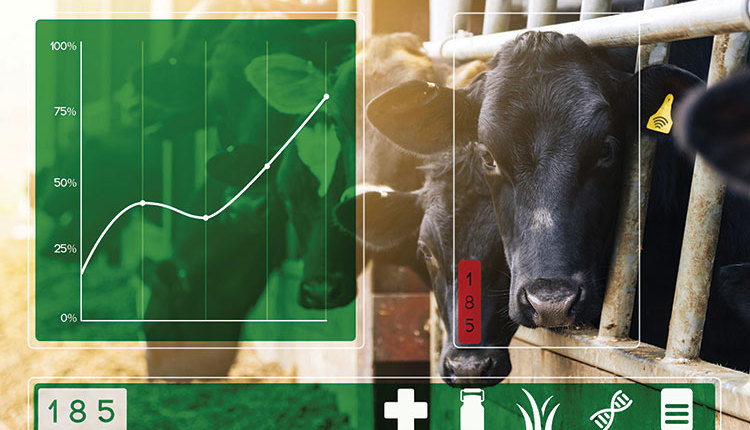
As more and more data is collected on land use, farm operations, animal health, and food supply chains, many initiatives, including the Dairy Brain project at the University of Wisconsin-Madison, promise to use these data to enhance operations, improve profitability, and preserve the environment for future generations. While some communities have actively engaged in data sharing and digital enhancements, there remain distinct concerns about these approaches that must be addressed before any widespread adoption can occur.
In an effort to resolve these issues, the Dairy Brain project aims to create and nurture a Coordinated Innovation Network (CIN) for data science in the dairy industry. That goal is in line with the USDA’s overarching goal: “addresses bottlenecks . . . by bringing together experts from different disciplines and domains to identify innovative and synergistic solutions.”
We are looking for input from all segments of the dairy industry. If you or someone you know is interested in this discussion and wants to engage in the process, become a Dairy Brain CIN member by going to https://dairybrain.wisc.edu/ or use the QR code in the web box on this page.
A brighter future
The Dairy Brain project looks to develop an engaged group (the CIN) that will bring together research, education, and extension communities and integrate them with equal representation from the greater dairy community and the general public. This group will address multiple aspects of data-supported problems that could impede progress in the field of data-driven dairy management. It will raise awareness, create guidelines, and facilitate the process of exploring some of the critical issues around technological adoption, including:
Who owns the data?
How is the data collected, and how is security and privacy managed?
What are the technological hurdles and economic considerations associated with integrating data streams and related services from multiple companies and service providers in the dairy industry?
A long-term approach
To start this process, and to engage a larger community of stakeholders, four opinion articles will be published as a follow-up to this article. These opinion articles represent a collaborative effort between the CIN steering committee and the Dairy Brain team to initiate community engagement and open discussions that will be summarized in the Dairy Brain CIN’s design documents. Stay tuned for these opinion articles that will be published in upcoming Hoard’s Dairyman issues in March and April 2020.
Why should we do this?
In a time when dairy farms continue to grow larger while margins are getting smaller, many farmers are looking to technological innovations to maximize their productivity and keep their operations competitive, profitable, and sustainable. Many of these innovations generate vast amounts of data, based on the premise that enhanced record keeping will provide better insights as to what is happening on the farm and provide additional opportunities for improvement.
Unfortunately, integrating and interpreting these data to improve whole farm-based management and decision-making has proven challenging. In fact, at some point, the collection and maintenance of this data becomes more of a liability and less of an asset. As such, an opportunity exists to develop a system that can manage and process these data in a way that will provide better insights, and in turn help farmers to make more informed decisions.
The Dairy Brain project (funded via a seed grant from the University of Wisconsin-Madison UW2020 program and now supported by the USDA-NIFA Food and Agriculture Cyberinformatics Tools initiative) proposes developing an automated system that handles the collection and processing of data from dairy operations. The purpose is to provide insightful analyses and other value-added services back to the farmer. The Dairy Brain is not tied to a particular vendor, or data provider, and intends to maintain independence to facilitate broad adoption of standards and designs of data processes within the realm of dairy science.
A fruitful outcome
Why should this be successful when other initiatives have failed?
First, the Dairy Brain has benefited from the ongoing input and feedback of an advisory committee. That committee has evolved into a steering group for the Dairy Brain CIN, and the first Dairy Brain CIN meeting was held on September 30, 2019, at the Wisconsin Institute for Discovery.
The CIN is comprised of 62 members from a wide range of backgrounds including farmers, industry professionals, and academics from diverse locations throughout the U.S., Canada, Israel, Australia, and a number of European countries. It drives the project toward more engagement and overall dairy concerns.
Second, the team is multidisciplinary. The group is open to the CIN guiding many aspects of the Dairy Brain project including the evolution of a data warehouse, the prioritization of new decision support tools, and the development of extension programs that will allow our dairy industry stakeholders to capture the value of data integration.
Initial findings
Third, we conducted an online poll to better understand perceptions of the most important issues regarding data integration and its use on dairy farms. The 180 respondents included industry professionals (30 percent), farmers (23 percent), consultants (18 percent), academics (15 percent), and others (13 percent).
A large majority of respondents (68 percent) agreed or strongly agreed that data ownership is an important and timely issue in the dairy industry. In addition, a large proportion of respondents (72 percent) agreed or strongly agreed that data confidentiality is also a critical issue. Furthermore, 83 percent of farmers, 81 percent of academics, and 79 percent of consultants were concerned or very concerned about data collection standards. Other important challenges identified in this survey were lack of awareness of all the data available and its potential benefits (73 percent) and lack of data integration on dairy farms (74 percent).
These results support the critical role of the CIN and the urgent need for an engaged community to tackle these data-related issues and capture the corresponding opportunities to enhance dairy farm management.
The project is looking to expand the CIN to integrate more of the farming community, and its membership is open to all farmers, academics, consultants, and industry professionals. It is critical for scientists and represented communities to be engaged in framing the debate about artificial intelligence and data usage in dairy production systems. This will ensure that the correct science, tools, and/or technologies are used, and the general public is informed as to how such science can and should impact the industry more broadly.
Join the Dairy Brain team








